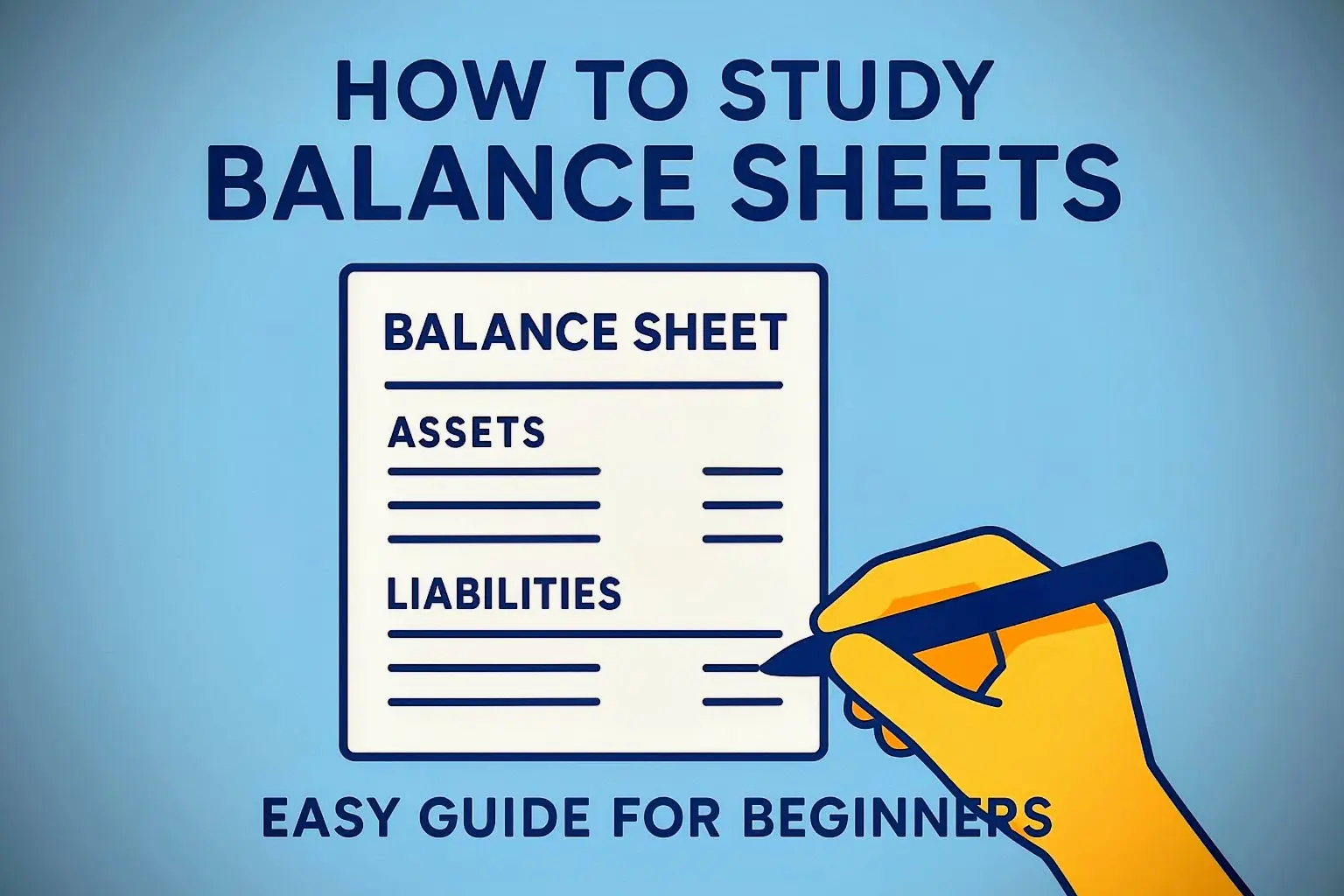

Why Cash Flow Statement Matters More Than You Think
While the income statement shows profitability and the balance sheet shows financial position, the cash flow statement reveals the lifeblood of a business - cash. Many profitable companies have failed because they ran out of cash, making this statement crucial for investors.
A cash flow statement tracks how cash moves in and out of a company during a specific period. It answers three fundamental questions:
- Where did the cash come from?
- Where did the cash go?
- What was the net change in cash position?
Unlike the income statement which uses accrual accounting, the cash flow statement shows actual cash movements, making it harder to manipulate and often more reliable.
Simple Analogy: Think of your personal finances - your salary slip is like an income statement (shows what you earned), your net worth statement is like a balance sheet (shows what you own and owe), and your bank statement is like a cash flow statement (shows actual cash coming in and going out).
The Three Main Sections of Cash Flow Statement
This is the most important section as it shows cash generated from the company's main business operations. It indicates whether the company can sustain itself from its core activities.
Includes:
- Cash from customers (sales)
- Cash paid to suppliers and employees
- Interest and taxes paid
- Adjustments for non-cash items (depreciation, changes in working capital)
What to look for: Consistently positive operating cash flow is a sign of a healthy business. Operating cash flow should generally be higher than net income.
This section shows cash used for investments in the company's future growth and cash received from selling assets.
Includes:
- Purchase of property, plant & equipment (Capital Expenditures)
- Purchase of other companies (Acquisitions)
- Purchase/sale of investments
- Proceeds from sale of assets
What to look for: Negative cash flow here is normal for growing companies (they're investing in future growth). However, check if these investments are generating returns.
This section shows cash from raising capital and cash used to return capital to investors and creditors.
Includes:
- Issuing or repurchasing company shares
- Borrowing or repaying debt
- Paying dividends
- Other financing activities
What to look for: Companies returning cash to shareholders (dividends, buybacks) is generally positive. Heavy reliance on financing to fund operations is a red flag.
Sample Cash Flow Statement: Understanding with Example
Let's look at a simplified cash flow statement for "XYZ Manufacturing Company" for the year ended March 31, 2025:
| XYZ Manufacturing Company | |
|---|---|
| Cash Flow Statement for Year Ended March 31, 2025 (Amounts in ₹ Lakhs) | |
| CASH FLOW FROM OPERATING ACTIVITIES | |
| Net Income | 500 |
| Adjustments to reconcile net income to net cash: | |
| Depreciation & Amortization | 150 |
| Increase in Accounts Receivable | (80) |
| Increase in Inventory | (120) |
| Increase in Accounts Payable | 60 |
| Net Cash from Operating Activities | 510 |
| CASH FLOW FROM INVESTING ACTIVITIES | |
| Purchase of Property, Plant & Equipment | (300) |
| Purchase of Investments | (100) |
| Proceeds from Sale of Old Equipment | 50 |
| Net Cash Used in Investing Activities | (350) |
| CASH FLOW FROM FINANCING ACTIVITIES | |
| Proceeds from Bank Loan | 200 |
| Repayment of Long-term Debt | (100) |
| Dividends Paid | (150) |
| Net Cash from Financing Activities | (50) |
| Net Increase in Cash | 110 |
| Cash at Beginning of Year | 240 |
| Cash at End of Year | 350 |
Key Takeaways from this example:
- Operating cash flow (₹510) is positive and higher than net income (₹500) - Good sign
- Company is investing in growth (₹350 spent on investments) - Normal for growing company
- Financing activities show balanced approach - some borrowing but also debt repayment and dividends
- Overall cash position improved by ₹110 - Healthy
Key Cash Flow Metrics Every Investor Should Know
Formula: Operating Cash Flow - Capital Expenditures
What it tells you: Cash available for dividends, debt repayment, acquisitions, or reinvestment
XYZ Company: 510 - 300 = ₹210 lakhs (Healthy)
Formula: (Operating Cash Flow ÷ Revenue) × 100
What it tells you: How much cash each rupee of revenue generates
Good range: Generally above 10%
Formula: Operating Cash Flow ÷ Total Debt
What it tells you: Ability to pay off debt from operations
Good range: Above 0.5 (50%)
Formula: Capital Expenditures ÷ Operating Cash Flow
What it tells you: What percentage of operating cash flow is reinvested
XYZ Company: 300 ÷ 510 = 59% (Reinvesting heavily)
Step-by-Step Guide to Analyzing Any Cash Flow Statement
Step 1: Start with Operating Cash Flow
This is your primary focus. Ask these questions:
- Is operating cash flow positive? (Must be for sustainable business)
- Is it growing over time? (Good sign)
- Is it higher than net income? (Generally should be)
- What are the major adjustments from net income to operating cash flow?
Step 2: Analyze the Quality of Earnings
Compare operating cash flow with net income:
Quality of Earnings = Operating Cash Flow ÷ Net Income
- Ratio > 1: High quality earnings (company collects cash well)
- Ratio < 1: Potential red flag (profits not converting to cash)
- Consistently < 1: Serious concern about business model
Step 3: Examine Investing Activities
Understand the company's growth strategy:
- Are they investing in future growth? (Negative cash flow normal)
- What percentage of operating cash flow is being reinvested?
- Are they selling assets to raise cash? (Could signal trouble)
Step 4: Review Financing Activities
Understand how the company funds itself:
- Is the company returning cash to shareholders? (Dividends, buybacks)
- Are they taking on more debt or repaying it?
- Do they need external financing to fund operations? (Red flag)
Step 5: Calculate Free Cash Flow
This is the most important metric for many investors:
Free Cash Flow = Operating Cash Flow - Capital Expenditures
Positive and growing free cash flow indicates a healthy, sustainable business.
💡 Professional Analyst Insight
Look for companies with the "triple crown" of cash flow: 1) Positive operating cash flow, 2) Positive free cash flow, and 3) Operating cash flow greater than net income. This combination suggests a high-quality business with sustainable cash generation.
Understanding Cash Flow Patterns
Different cash flow patterns tell different stories about a company's life cycle and health:
🚀 Growth Company Pattern
Operating: Positive but may be volatile
Investing: Strongly negative (heavy investments)
Financing: Positive (raising capital to fund growth)
Example: Tech startups, rapidly expanding businesses
💎 Mature Company Pattern
Operating: Strongly positive and stable
Investing: Moderately negative (maintenance CAPEX)
Financing: Negative (returning cash to shareholders)
Example: Established blue-chip companies
⚠️ Troubled Company Pattern
Operating: Negative or declining
Investing: May be selling assets
Financing: Constantly positive (relying on external funding)
Example: Companies in financial distress
Real Company Comparison: What to Look For
Let's compare two fictional companies in the same industry:
| Metric | Healthy Co. | Risky Co. | Analysis |
|---|---|---|---|
| Operating Cash Flow | ₹500 Cr | ₹150 Cr | Healthy Co. generates more cash from operations |
| Free Cash Flow | ₹300 Cr | -₹50 Cr | Risky Co. burns cash even after investments |
| Quality of Earnings | 1.2 | 0.6 | Risky Co.'s profits not converting to cash |
| CAPEX/Operating CF | 40% | 130% | Risky Co. invests more than it generates |
| Dividend Coverage | 3.0x | 0.8x | Risky Co. can't cover dividends from cash flow |
Based on this analysis, Healthy Co. is clearly the better investment choice.
Common Cash Flow Statement Mistakes to Avoid
⚠️ Common Beginner Mistakes
- Ignoring operating cash flow: Focusing only on net income
- Not checking consistency: One good year doesn't make a trend
- Misinterpreting investing cash flow: Negative isn't always bad
- Overlooking working capital changes: Big swings can signal problems
- Not reading footnotes: Important details hide in the notes
- Industry blindness: Different industries have different cash flow patterns
Cash Flow vs. Other Financial Statements
Understanding how the cash flow statement connects with other statements is crucial:
| Financial Statement | What It Shows | Connection to Cash Flow |
|---|---|---|
| Income Statement | Profitability over time | Net income is starting point for operating cash flow |
| Balance Sheet | Financial position at a point | Changes in balance sheet items affect cash flow |
| Cash Flow Statement | Cash movements over time | Explains change in cash on balance sheet |
Remember: The cash flow statement bridges the income statement and balance sheet. It explains how the company went from one balance sheet to the next through cash activities.
Where to Find Cash Flow Statements
As an investor, you can access cash flow statements through the same sources as balance sheets:
Complete financial statements including cash flow statements are in annual reports sent to shareholders.
MoneyControl, Screener.in, Yahoo Finance, and Google Finance provide cash flow statements.
Quarterly and annual filings with regulatory bodies contain cash flow statements.
Company websites' investor relations sections have financial statements and presentations.
Your Quick Cash Flow Analysis Checklist
✅ Cash Flow Health Checklist
- Operating cash flow positive and growing
- Operating cash flow > Net income (Quality of earnings > 1)
- Positive free cash flow
- Reasonable capital expenditures (not consuming all operating cash flow)
- Not constantly reliant on financing to fund operations
- Consistent pattern appropriate for company's life cycle
- Adequate cash reserves for emergencies
- Dividends covered by free cash flow
Final Thoughts for Beginners
Mastering cash flow statement analysis will significantly improve your investment decision-making. Remember these key principles:
- Cash is king - profits don't pay bills, cash does
- Focus on operating cash flow first - it's the lifeblood
- Free cash flow is what truly matters for shareholders
- Look for consistency and trends over multiple periods
- Understand the company's cash flow pattern based on its life cycle
- Always compare with industry peers for context
With practice, you'll be able to quickly assess a company's cash health and avoid investments in companies that might be profitable on paper but bleeding cash in reality.
Next Steps: Practice analyzing cash flow statements of companies you're interested in. Start with simple, established businesses and gradually move to more complex ones. Compare companies within the same industry to develop your analytical skills.
Other Financial Articles


Understanding ROCE and ROE: Smart Stock Selection Guide
